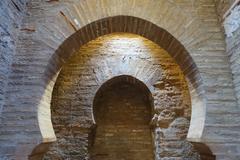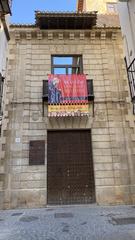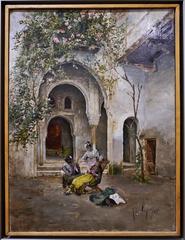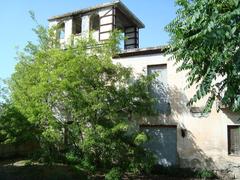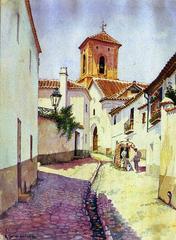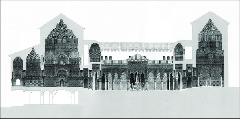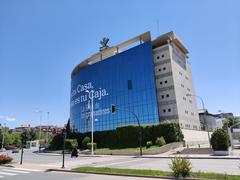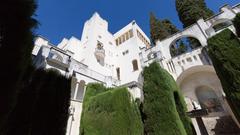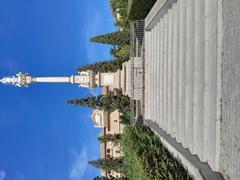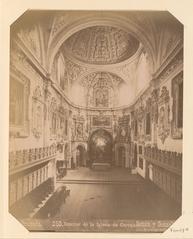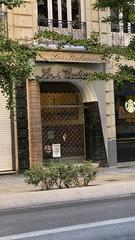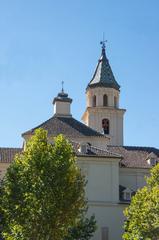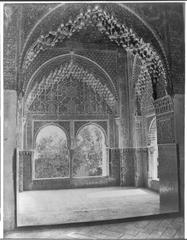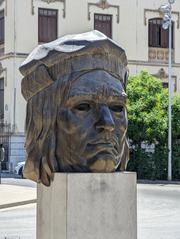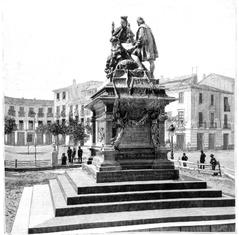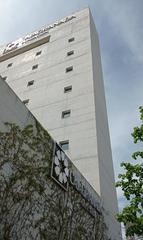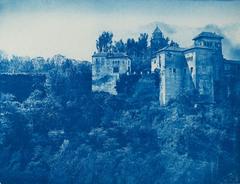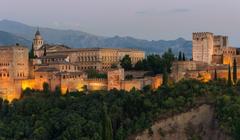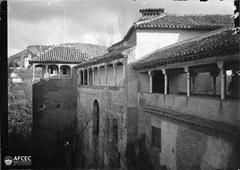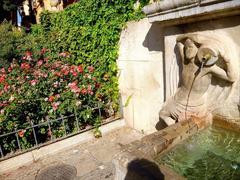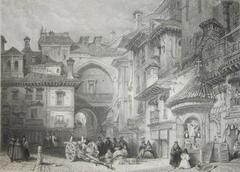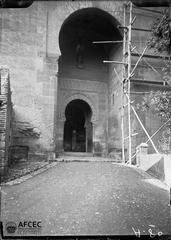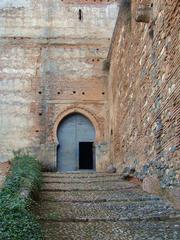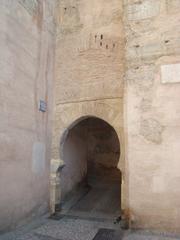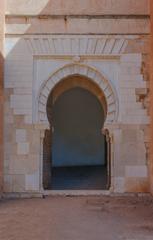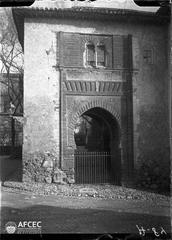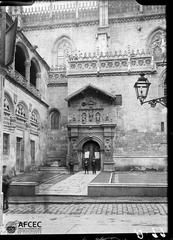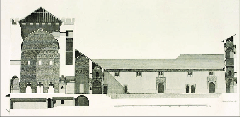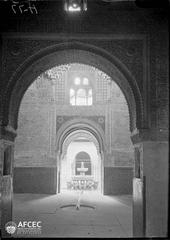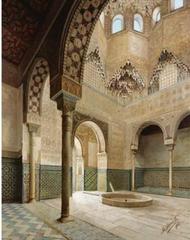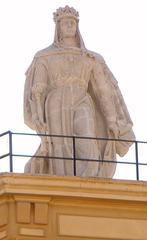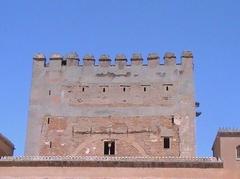Aljibe de San Nicolás: Visiting Hours, Tickets, and Historical Sites in Granada
Date: 14/06/2025
Introduction
Nestled in the heart of Granada’s Albaicín district, the Aljibe de San Nicolás is a striking testament to the city’s rich, layered past. This historic cistern, dating from the Nasrid period and later adapted during the Christian era, offers visitors an extraordinary glimpse into medieval water engineering and Granada’s urban development. Situated next to the Mirador de San Nicolás and the Church of San Nicolás, the aljibe is not only a marvel of Moorish craftsmanship but also a living symbol of the city’s enduring cultural fusion.
This comprehensive guide provides all the essential information for visiting the Aljibe de San Nicolás, including its history, architectural features, visiting hours, ticketing policies, accessibility, travel tips, and nearby attractions. Whether you are a history enthusiast, architecture lover, or casual traveler, this resource will ensure a seamless and enriching experience in one of Granada’s most emblematic neighborhoods (Rincones de Granada; LoveGranada; Visit Alhambra).
Contents Overview
- Introduction
- Historical Background
- Aljibes in Granada’s Urban Fabric
- Nasrid Origins and the Azitini Mosque
- Christian Transformations
- Architecture and Capacity
- Documentation and Debates
- Visiting the Aljibe de San Nicolás
- Visiting Hours & Ticketing
- Accessibility
- Travel Tips
- Nearby Attractions
- Events & Experiences
- Practical Visitor Information
- Frequently Asked Questions (FAQ)
- Summary Table: Key Attractions
- Conclusion
- Sources and Further Reading
Historical Background
Aljibes in Granada’s Urban Fabric
Granada’s aljibes, or cisterns, have been vital to the city’s water supply since the Islamic period. In the Albaicín alone, at least 28 public cisterns supported daily life, especially for households without private wells. These structures exemplify the advanced water management systems implemented during the Nasrid era and were crucial in a region where rainfall was scarce and efficient water storage was a matter of survival (Rincones de Granada).
Nasrid Origins and the Azitini Mosque
The Aljibe de San Nicolás traces its origins to the 11th century, serving the Azitini Mosque and its surrounding community. Water was channeled via the acequia de Aynadamar, an impressive irrigation system delivering clean water throughout the Albaicín. Early Moorish aljibes typically featured rectangular or square chambers, lined with waterproof mortar and topped with barrel vaults to protect water from contamination and evaporation (Albaicín Granada).
Christian Transformations
After the Christian conquest in 1492, the mosque was transformed into the Church of San Nicolás, and the aljibe was either rebuilt or significantly modified. The present structure, with its wide vault and brick façade, reflects a mix of Islamic and Christian architectural influences. The addition of a two-spout fountain in the 1940s further enhanced its utility and visibility (Alhambradegranada.org; Mispaseosporgranada.com).
Architecture and Capacity
Measuring approximately 4.90 meters long, 4.67 meters wide, and 5.16 meters high, the Aljibe de San Nicolás holds up to 62 cubic meters of water—making it one of the largest public cisterns in Granada. Its wide barrel vault, brickwork, and curved pediment set it apart from other Moorish cisterns, highlighting the site’s historical evolution (Albaicín Granada; Rincones de Granada).
Documentation and Debates
While some scholars once considered the aljibe a more modern structure, documentation dating back to 1646 confirms its historical significance. The vault’s unusual width is often cited as evidence of Christian-era reconstruction on top of earlier Islamic foundations (Granada Hoy).
Visiting the Aljibe de San Nicolás
Visiting Hours & Ticketing
- Public Access: The aljibe is located in a public plaza and can be viewed at any time. There is no official opening or closing time for the exterior.
- Guided Tours: Tours that include the aljibe typically operate from 10:00 AM to 6:00 PM. These offer in-depth historical and architectural insights.
- Tickets: Viewing the aljibe from the outside is free. Some guided walking tours include it as part of a broader Albaicín itinerary, with fees ranging from €10 to €20 per person (LoveGranada).
- Special Site Entry: Occasionally, the interior may be accessible during heritage events or guided visits, usually included in the cost of a tour.
Accessibility
Due to the Albaicín’s steep, cobbled streets, access can be challenging for visitors with reduced mobility. The plaza itself is mostly level but may have minor obstacles. Taxis and minibuses (lines C31 and C32) offer easier access to the area.
Travel Tips
- Best Times: Early mornings or late afternoons are quieter and provide the best light for photography.
- Dress & Footwear: Wear comfortable shoes suitable for uneven, cobbled surfaces. In summer, bring water, a hat, and sunscreen.
- Etiquette: Do not climb on the structure and respect the tranquility of the neighborhood.
Nearby Attractions
- Mirador de San Nicolás: World-famous viewpoint offering panoramic vistas of the Alhambra and Sierra Nevada (HeyGranada; España Guide).
- Church of San Nicolás: 16th-century church with Mudéjar elements, often hosting concerts and events.
- Albaicín Quarter: A UNESCO World Heritage Site, renowned for its labyrinthine streets, whitewashed houses, and traditional carmenes.
- Aljibe del Rey & Aljibe de Trillo: Other historic cisterns nearby, showcasing Granada’s sophisticated water infrastructure.
Events & Experiences
The Plaza de San Nicolás is often animated by street musicians, artisan markets, and cultural festivals. Special events sometimes offer interior visits or historical demonstrations.
Practical Visitor Information
Getting There
- Public Transport: Minibus lines C31 and C32 connect the city center to the Albaicín and stop near Mirador de San Nicolás (Love Granada).
- On Foot: A scenic but steep 15–20 minute walk from Plaza Nueva through picturesque Albaicín streets.
- By Taxi: Taxis reach the upper Albaicín, though final access may require a short walk.
Amenities
- Restrooms: Not available at the plaza; nearby cafés and restaurants may offer facilities to customers.
- Food & Drink: Local establishments like Balcón de San Nicolás and Huerto de Juan Ranas provide refreshments and stunning views.
- Shops: Artisan stores nearby offer ceramics, textiles, and traditional crafts.
Accessibility for Families & Groups
The open plaza is suitable for families and groups, but supervision is recommended for children due to uneven terrain and steps.
Frequently Asked Questions (FAQ)
Q: Is there an entrance fee to visit the Aljibe de San Nicolás?
A: No, viewing the cistern from the plaza is free. Guided tours may charge a fee.
Q: What are the visiting hours?
A: The plaza is accessible at all times; guided tours generally run from 10:00 AM to 6:00 PM.
Q: Is the site wheelchair accessible?
A: Access is limited due to steep, cobbled streets.
Q: Can I go inside the cistern?
A: The interior is usually closed to the public; occasional heritage days or guided tours may grant access.
Q: Can I take photos?
A: Yes, photography is permitted. Drones require special authorization.
Summary Table: Key Nearby Attractions
| Attraction | Distance | Highlights | Entry Fee |
|---|---|---|---|
| Mirador de San Nicolás | 0 m | Panoramic views of Alhambra & Sierra Nevada | Free |
| Iglesia de San Nicolás | <50 m | Mudéjar architecture, concerts | Free |
| Plaza de San Nicolás | 0 m | Community events, street music | Free |
| Aljibe del Rey | ~400 m | Largest Moorish cistern in Albaicín | Free |
| Mirador de San Cristóbal | ~700 m | Views of Albaicín and ancient city walls | Free |
| El Trillo Restaurante | ~350 m | Andalusian cuisine, Alhambra views | Varies |
| Alhambra & Generalife | Visible (~1.5 km) | Palaces, gardens, Nasrid history | Paid |
Conclusion
The Aljibe de San Nicolás stands as a living monument to Granada’s layered history—blending Islamic ingenuity with Christian heritage in the evocative setting of the Albaicín. Its preservation and accessibility allow visitors to connect with the city’s past while enjoying panoramic views and vibrant local culture. Whether you’re exploring the historic cisterns, wandering the narrow streets, or soaking up the atmosphere at sunset, a visit to the Aljibe de San Nicolás is an essential Granada experience.
For up-to-date information, guided tours, and audio guides, download the Audiala app. Follow us on social media for travel inspiration, tips, and the latest on Granada’s historical sites.

